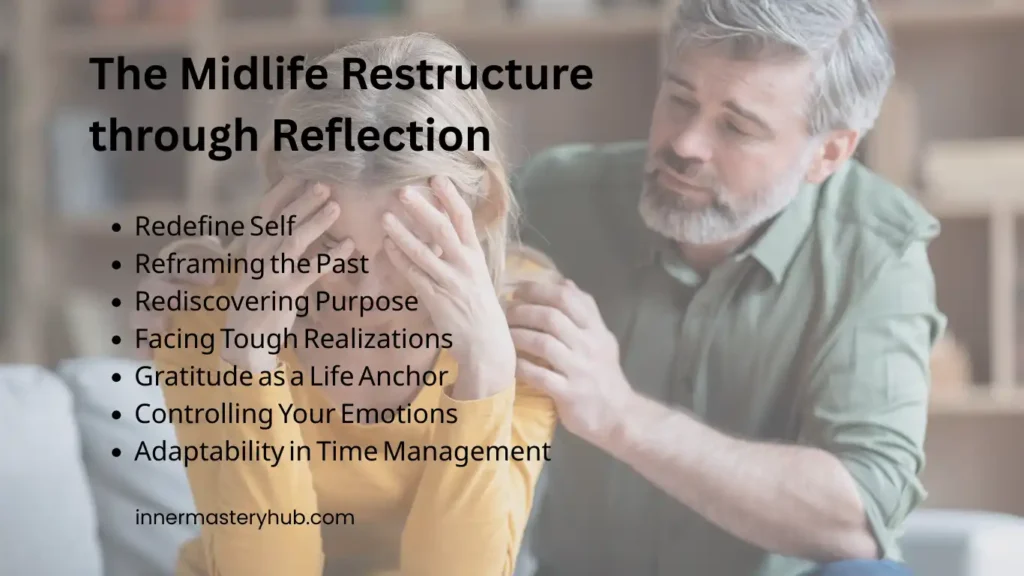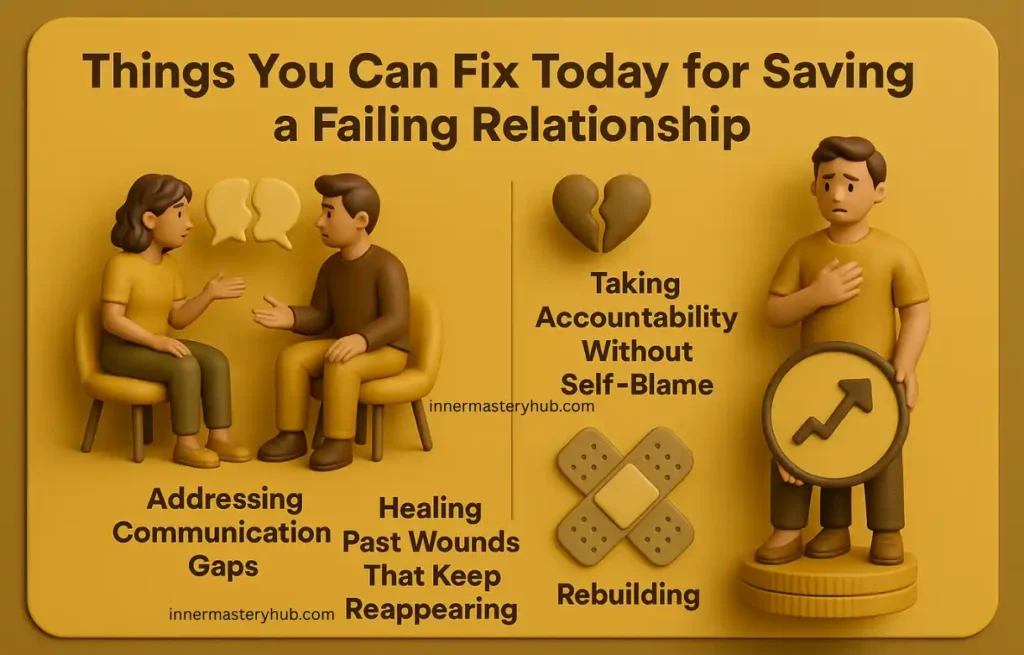7 Guaranteed Shadow Work Prompts for Relationships Conflict Resolution

Why I wrote these shadow work prompts for relationships
I have kept stumbling over the same old arguments. My mind said, “Communicate better,” yet my reactions kept hijacking the conversation. Shadow work prompts for relationships saved my bond and helped me notice the hidden parts of me that sabotaged intimacy.
Unseen parts break the connection
Unintegrated traits lower satisfaction
Research shows that when partners avoid addressing their own unresolved issues, daily relationship satisfaction declines and health markers deteriorate. A February 2025 longitudinal study that tracked 412 couples found that on days when one partner felt less satisfied, both partners reported higher stress and poorer sleep.
Attachment wounds distort perception.
I once thought my partner’s late replies proved disinterest. In truth, my anxious attachment style colored neutral events as threats. A 2023 Italian study found a link between insecure adult attachment and lower psychological well-being and relationship quality in 393 participants.
Shadow drives projection
Carl Jung named the “shadow” the parts of self we deny and then project onto others. When I refused to admit my own need for control, I accused my partner of being controlling. The shadow ran the show, and the bond suffered as a result.
What happens if you ignore the shadow work
Patterns repeat louder
Denied traits do not disappear; they surface as criticism, withdrawal, or scorekeeping. When you suppressed jealousy, it leaked out as passive comments. Couples stuck in these loops divorce at rates of up to 47% within the first decade, according to meta-analyses of Family Systems.
Stress affects health.
Lower relationship quality is associated with higher cortisol, inflammation, and cognitive decline. In a 2025 gerontology study, older adults in distressed marriages performed worse on memory tasks than their happily partnered peers. Emotional neglect literally fogs the brain.
Children absorb the pattern.
If you co-parent, your unexamined shadow scripts attachment models for the next generation. A 2024 developmental study showed that toddlers exposed to unresolved inter-parental conflict displayed heightened startle responses, a marker of early anxiety. Ignoring the shadow costs time, health, and legacy.
Seven shadow work prompts for relationships.
Below are the exact journal queries I still use. I run them weekly or when a conflict spikes. Each prompt follows a three-step micro-process: acknowledge, trace, and integrate. Feel free to copy the wording into your notebook or notes app.
1. Trigger Snapshot
Prompt
“What happened in the last 24 hours that stirred a strong reaction in me? List facts only.”
Why it works
The brain calms when events sit separate from feelings. Experiments on expressive writing have shown that factual descriptions reduce amygdala activation, thereby creating space for insight.
Example
Yesterday, my partner left the room during a conversation. I felt heat in my chest.
2. Emotion Label + Body Map
Prompt
“Name the primary emotion and locate it in the body. Rate its intensity 1-10.”
Why it works
Studies on introspection find that labeling emotions increases prefrontal control and lowers physiological arousal quickly than distraction does.
Example
Emotion: Anger. Body: Tight shoulders. Intensity: 7/10.
3. Origin Memory Search
Prompt
“When did I first remember feeling this same body signal? Describe the earliest scene.”
Why it works
Tracing sensations back often links to childhood attachment wounds. A 2022 review of cross-cultural attachment research confirmed that early caregiver responses significantly influence adult threat perception.
Example
At age eleven, my father walked out during my school story. I felt the same chest heat.
4. Hidden Belief Extraction
Prompt
“Complete: ‘Because my partner did X, it means ___ about me.’ Is this belief always true?”
Why it works
Cognitive restructuring relies on surfacing automatic thoughts. Clinical trials on couples’ CBT report 35% gains in satisfaction after belief-challenging exercises.
Example
“Because they left, it means I am boring.” That belief is not a universal truth.
5. Self-Compassion Reframe
Prompt
“Write three sentences to yourself as a caring friend would.”
Why it works
A 2025 meta-analysis found a link between higher self-compassion and secure attachment, as well as reduced conflict escalation. Compassion lowers defensiveness, paving the road for dialogue.
Example
“You felt unseen. Anyone would be hurt. You deserve to be heard.”
6. Ownership Statement Crafting
Prompt
“Translate the story into an ‘I’ statement to share: ‘I felt ___ when ___ because ___.’”
Why it works
Clear ownership reduces blame. Couples who practice “I language” show quicker heart-rate recovery during conflict discussions (pmc.ncbi.nlm.nih.gov).
Example
“I felt upset when you left the room because I started to think my words did not matter.”
7. Shadow Dialogue Integration
Prompt
“Ask the part of me that felt X: ‘What do you protect?’ Write the answer. Thank the part.”
Why it works
This dialogue brings the shadow into conscious alliance. Jungian analysts note that integration, not eradication, dissolves projection. Therapy case studies report decreased hostility after clients personified and thanked protective shadow parts.
Example
Part replies: “I protect your need to feel interesting.” I respond: “Thank you for guarding that need.”
Putting the shadow work prompts for relationships into a weekly rhythm
I structure my week like this:
| Day | Action | Time needed |
|---|---|---|
| Monday | Run Prompt 1-2 on weekend triggers | 10 min |
| Wednesday | Run Prompt 3-4 | 15 min |
| Friday | Run Prompt 5-7 and share insight with partner at dinner | 20 min |
Total: 45 minutes weekly. Less time than scrolling feeds.
How the shadow work prompts for relationships saved one conflict
Scene
Partner forgot our agreed movie night. Old me would sulk. New me opened my notebook.
- Trigger Snapshot. “Partner canceled movie at 8 pm.”
- Emotion Label. Disappointment in throat, intensity 6.
- Origin Memory. At the age of nine, Mom missed the school play.
- Belief. “People disappear when I rely on them.”
- Self-Compassion. “You want a connection. That is healthy.”
- Ownership Statement. “I felt disappointed when the plan changed because time with you matters to me.”
- Shadow Dialogue. Part said: “I protect your wish to feel special.” I thanked it.
Integration creates lasting intimacy.
I once blamed communication techniques alone. Then I met the shadow and saw the root. Shadow work prompts for relationships gave me a mirror and a toolkit.
You now hold that toolkit. Seven prompts, forty-five minutes a week, evidence on your side, and a partner who will likely feel the difference before you even speak about it. The hidden parts are not enemies; they are hand-written letters from your earliest self asking to be heard. Open them, read them, and watch your relationship breathe easier.
FAQs on shadow work prompts for relationships
What exactly are shadow work prompts for relationships?
Shadow work prompts for relationships are guided journaling questions that expose hidden fears, beliefs, and needs driving your intimacy patterns. Borrowed from Jung’s concept of the “shadow,” the practice helps partners identify projections before conflict escalates, thereby boosting empathy and satisfaction over time.
How do I start shadow work prompts for relationships if I’m new to this?
Choose one prompt, write facts first, then feelings. A USF study showed that two weeks of expressive writing reduced conflict, even when the pages remained private. Begin solo, fifteen minutes per session after a trigger, to lock in insight while emotions remain vivid. Repeat steadily weekly for consistency.
Why do shadow work prompts for relationships matter in romantic bonds?
Unintegrated traits predict lower daily satisfaction and poorer well-being. By surfacing unconscious material, couples interrupt projection cycles and restore secure attachment—a link confirmed in an Italian study of 393 adults. Integrated partners also report remarkably greater resilience and emotional intelligence levels.
Can shadow work prompts for relationships improve communication with my partner?
Yes. Reframing disagreements through writing cut aggression and conflict intensity in a controlled study. Prompts that turn blame into self-inquiry make sharing feelings safer, providing a receptive foundation for skills like active listening and yielding notable improvements in empathy and dialogue speed.
How often should I use shadow work prompts in a relationship?
Weekly rhythm works best. A 2025 review of 51 expressive-writing studies found that three 15-minute sessions a week produced long-term gains, whereas daily sessions risked fatigue. Consistent weekly practice embeds meaningful insights, allowing healthy, gradual nervous-system adaptation and preventing emotional backslide steadily.
Will shadow work prompts fix a failing relationship?
Prompts reveal patterns but still need action. When both partners are engaged, satisfaction rises; when one partner is alone, change occurs more slowly. Combine prompts with communication skills, boundaries, and, if abuse or severe trauma exists, professional therapy for lasting emotional safety and comprehensive restoration.
Are shadow work prompts safe to do without a therapist?
Most adults journal safely. People with untreated PTSD or a self-harm history can feel overwhelmed. Professionals advise pairing prompts with grounding techniques (such as deep breathing or sensory anchoring) and limiting sessions to ten minutes. Stop and seek help if initial distress persists significantly beyond twenty minutes post-writing.
How long before shadow work prompts show results in relationships?
Minor improvements appear within two weeks—the window observed in expressive-writing trials. More profound changes, such as reduced jealousy or anxious attachment, often emerge after eight to twelve weeks of consistent practice. Track triggers, celebrate wins, and adjust prompts to maintain constant momentum through the three-month milestone.
What are the best shadow work prompts for healing jealousy?
Ask, “What story do I attach to my partner’s autonomy?” and “Where did jealousy protect me as a child?” Naming protective motives reduces defensive anger; emotion-labelling studies show decreased amygdala reactivity when feelings are verbalised. Practice replacing assumptions with curiosity and appreciation daily to foster a shared emotional safety.
Can shadow work prompts help address attachment issues?
Attachment-focused prompts—like tracing earliest memories of abandonment—help reframe adult triggers. A 2023 Italian study linked such reflection to higher relationship quality. Pair journaling with somatic soothing, open dialogue, and coaching to build attachment-healing momentum, cultivating long-term relational security.






